© 2025 ALLCITY Network Inc.
All rights reserved.

After a long offseason, finally, we had some real, competitive football to break down.
In the Denver Broncos 27-24 win over the Seattle Seahawks, the offense looked better than it has in a long time, without a single three-and-out drive in Week 1.
A big part of the offense’s success stemmed from a variety of personnel packages that coordinator Bill Musgrave unleashed, keeping Seattle on their heals for most of the game.
Not just diverse personnel packages, but how many formations Musgrave utilized within those different packages, was pretty interesting, with a new emphasis on heavier formations mixed in with spread looks. We even got a sneak peak of the OC’s jumbo package, with Billy Turner brought in as a sixth offensive lineman.
With that, after going back to the tape, here’s what stood out about Musgrave’s offense and all the different things he did schematically.
’12-personnel’ but spread out wide
Before getting into the personnel sets that were most commonly used in the Seahawks game, there was one package that stood out like a sore thumb when rewatching the tape; the use of two tight end sets, but in a spread out, five-wide look, with an empty backfield.
Even more interesting, Musgrave used those formations three times, two of the three with the Broncos pinned back at their own 10-yard line. Amazingly, both of those times, this crazy formation worked, netting Denver a first down and getting them out of dangerous territory.
How those two tight ends were used in a five-wide formation was crucial, though, and therein lies the method to Musgrave’s madness.
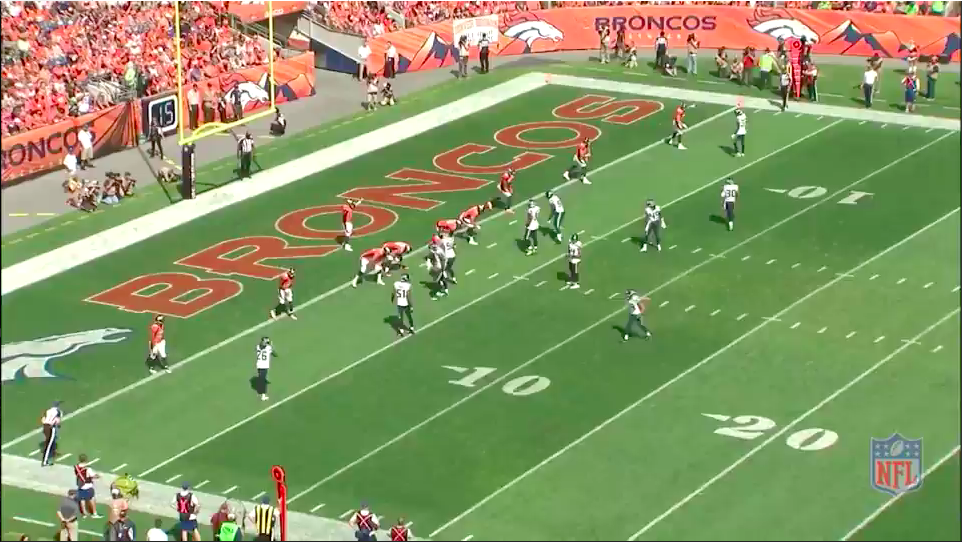
By unleashing such a formation, deep in his own territory, the play-caller is essentially able to run bubble screens without the defense seeing it coming, with better blockers on the outside.
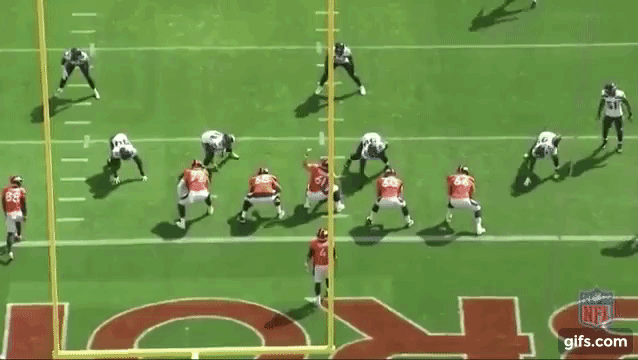
Both times, this formation worked perfectly with the tight ends out on the boundary and the slot receiver catching the ball for big gains.
This was a fun wrinkle by the offense, and with Case Keenum’s quick release, the plays were executed to perfection.
Now, the third time the Broncos implemented the five wide set, without two tight ends and closer to the 50-yard line, the results weren’t as pretty.
In that instance, in a third-and-long situation, Keenum didn’t have enough protection and was sacked— the only sack Seattle had in the game.
Three-wide-receiver sets still rule the day
11-personnel is what Mike McCoy used most in 2017, and it’s what Musgrave went to most often in Week 1. Three receivers, a tight end, and a back was also the personnel package in which Denver was most successful, with all three touchdowns coming that way.
The big difference between this offense and McCoy’s, on Sunday at least, was really down to the guys on the field. Musgrave now has a competent veteran QB, and three receivers, with depth behind them, who can create mismatches.
A great play that shows the versatility and danger of these three-receiver sets, is Phillip Lindsay’s touchdown, which started with trips to the left side.
A key to this play was the presnap motion from Sanders, who took a defender inside motioning from right to left.
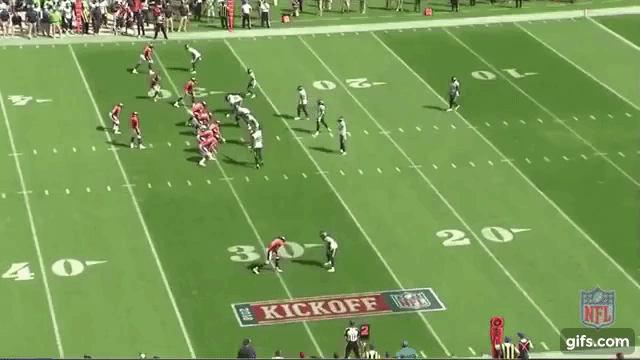
As the play unfolded, Jeff Heuerman, who was lined up outside, did a great job of sucking the boundary defender inside, creating confusion and leaving the sideline wide open for Lindsay to take the ball and go. DaeSean Hamilton did a terrific job blocking down the sideline on the play too.
These three-receiver sets opened up Seattle’s defense and created big plays and space for the Broncos’ receivers to roam.
Things weren’t perfect, though, as two of Keenum’s three interceptions came in 11-personnel.
Two-tight-end sets set the tone
Musgrave used two tight end sets a good amount in this game also, a key switch for Denver, who isn’t necessarily very deep at the position. With that said, Musgrave was able to roll out Jake Butt and Heuerman on 96 plays combined, with the former Buckeye appearing in 86 percent of the snaps, and the Michigan man in 52-percent.
These packages had a big impact in the ground game and the Broncos’ ability to help their offensive tackles in pass protection.
Musgrave made it a point to run out of two TE sets against Seattle and saw with mixed results. In the third quarter, the Broncos struggled a bit to get chunk yardage out of the running game, but the formation did play a big role in closing out the game, as the Broncos ran the ball with less than four minutes remaining out of these personnel packages with success.
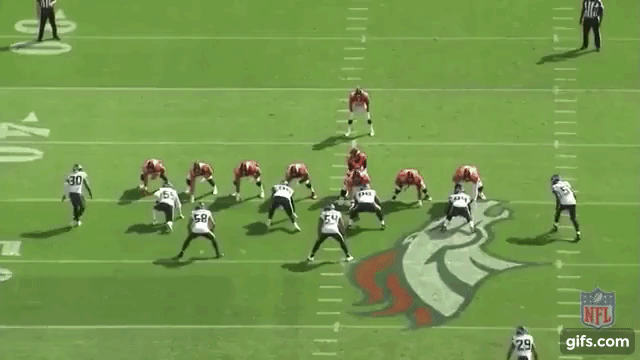
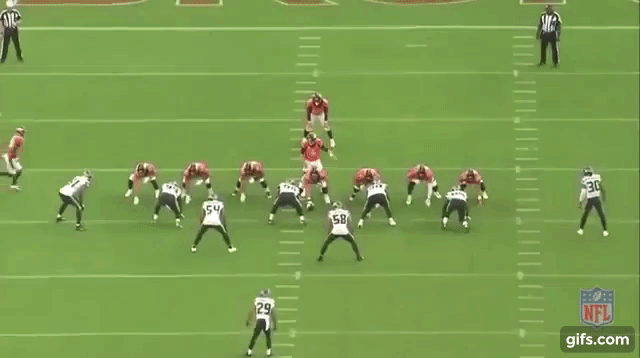
Having those two tight ends was a big help to the run game, but there’s room for improvement, as Heuerman still missed a few blocks, allowing two run stops, and Butt also had a few mishaps, allowing one run stop, and not always looking the strongest as a blocker.
The two Big-Ten products had a nice impact as receivers in the passing game, as well, and were versatile chess pieces, lining up anywhere from the backfield to the far hash.
In the two plays highlighted below, both Butt and Heuerman were put in motion pre-snap in two TE sets.
First, Keenum was able to hit Butt on a bootleg outside, as Musgrave gave Seattle a taste of their own medicine, with Butt engaging in a block and then breaking into a route.
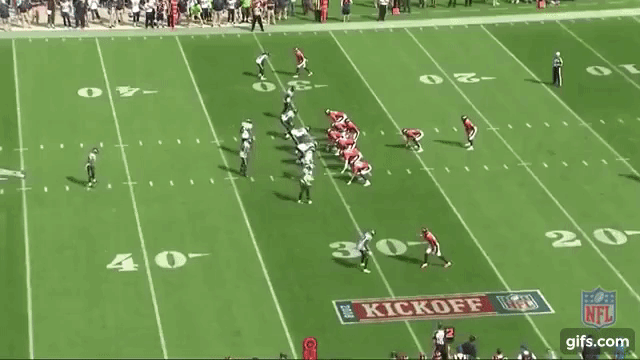
Later, Heuerman ran to the sideline after being set in motion and did a masterful job coming back to the ball, showing nice footwork to the sideline to haul in the 15-yard gain.
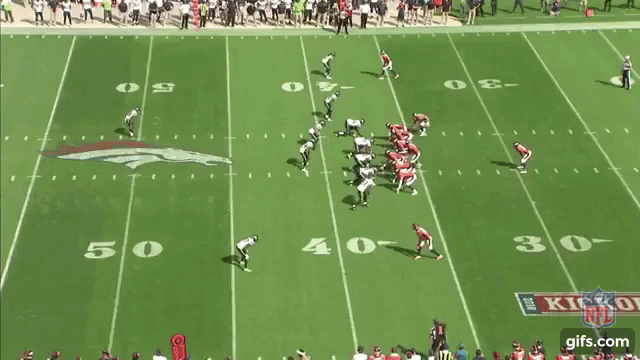
Between their impact as blockers and receivers out of two tight end formations, Butt and Heuerman had an underrated impact against the Seahawks. Don’t be surprised if that only increases with time.
Jumbo packages make an appearance
An aspect of Musgrave’s offense that we’ve talked about quite a bit on our film rooms in the last couple years, is his use of six offensive lineman in heavy jumbo packages, something we’ve admired on these pages since the time he put 30 on the Broncos back when he was the OC for the Oakland Raiders.
We got a taste of this in Week 1, with two such plays called by Musgrave, using Billy Turner in as an eligible receiver.
The first play was a quick 10-yard completion on 2nd and 10, where the max protection helped Keenum drop back and deliver a timely pass to Demaryius Thomas for the first down.
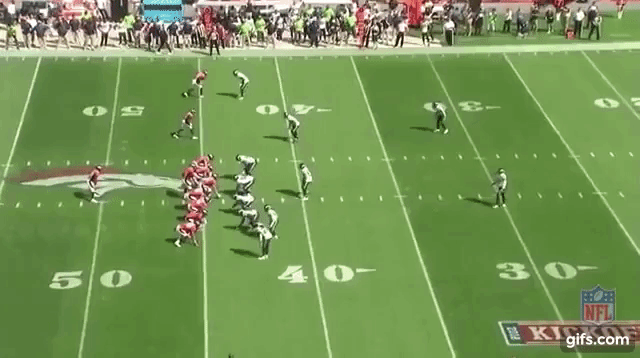
The second such play was a bootleg pass to Phill Lindsay on 3rd-and-3, which didn’t go as well, leading to an incompletion.
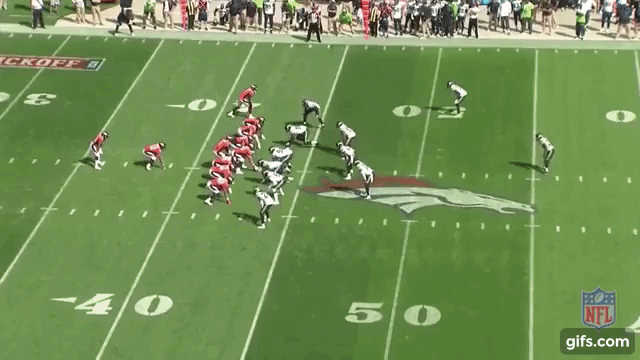
This second play is an example of how going in jumbo can limit the potential options in the passing game, which, in a short down-and-distance, can take away some of the quick throws that could get you the first down.
Throwing it to the sideline in the intermediate-to-long passing game, like in the first play, makes a lot of sense.
There’s not too much to read into the two plays, but it was nice to see Musgrave finally bring that jumbo flavor to his offense. Such formations could really help protect against top pass-rushing units, or if there were injuries on the offensive line.
In conclusion
Musgrave’s offense didn’t have any tendencies in Week 1 that defenses can key in on, but the scheme had more variety and was more efficient, putting up 470 yards as the offense consistently moved the ball.
Denver’s offense was an equal-opportunity attack, spreading the ball around and playing with balance, with five receivers going over 20 yards. The balance was refreshing sight, as the attack became stale and too easy to stop the last two seasons because opposing defenses could easily key in on Thomas and Sanders.
The combination of heavier sets also helped the run game and line, two other areas that the Broncos needed to improve in, a lot.
It’s important not to read too much into Week 1, but the early signs of Musgrave’s offense were really encouraging, as the scheme and packages the team has at their disposal will be fun to track the rest of the year.
Comments
Share your thoughts
Join the conversation



